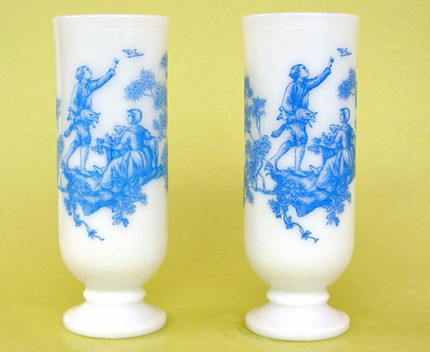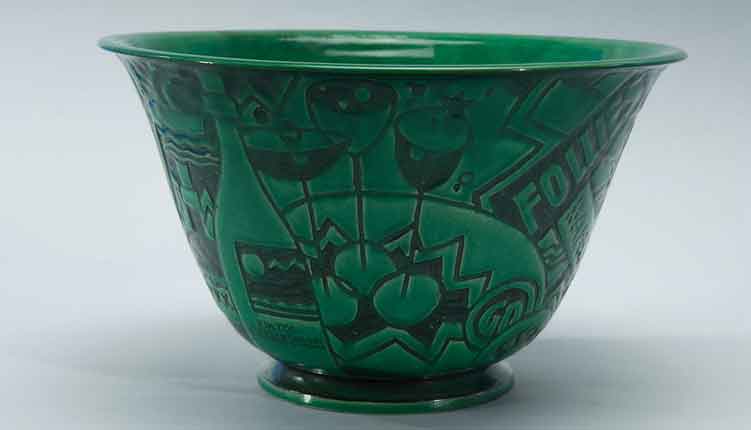A lifetime of use often shows on vintage pottery and glass, and rust and hard-water stains are common. Cleaning often increases value for resale if the pottery or glass is not chipped or broken. Cleaning also makes the item more attractive or aesthetically appealing. Knowledge is the key to cleaning stains from vintage pottery and glass.
Selecting Pottery or Glass for Cleaning
Vintage pottery or glass with serious chips, chunks or cracks is not worth the time spent cleaning. Sick glass etched from dishwasher use, or glass that has turned iridescent from years in the ground will not likely clean. Some damaged items have significant value, but the more common vintage pieces are not good candidates for increasing value by cleaning. Family heirlooms or sentimental glass and pottery are exceptions.

Wash with Soapy Water and a Toothbrush First
Washing can help distinguish removable dirt from stubborn stains, and the water will also show cracks and glaze breaks in pottery, since the water lines are darker in areas where there are glaze fractures. Wash one item at a time by placing a stopper in the sink and covering the bottom of the sink with a kitchen towel. This prevents the gray metal rubs and any additional cleaning requirements.
Use Common Products to Remove Rust
Lemon juice is recommended by Ohio State University and the National Park Service suggests oxalic acid can be used on metal window preservation projects. These products work on pottery and glass for removing rust stains, and both can be purchased from the grocery store. Read on the cans of cleansing powder to find a product with oxalic acid. Get idea about your bit.
Remove Hard Water Stains from Pottery and Glass
Popular pottery planters were made by American pottery companies to hold an ivy or container plants, and bud vases were made to hold cut flowers. Adding soil or water to a figural planter or bud vase caused calcium and hard-water stains in a continuous line around the inside. These hard water stains can be removed with vinegar, and white vinegar is safe to use full-strength.
Fill the planter or vase with white vinegar to cover the stain, and leave the vinegar in the pottery or glass for about 24 hours. The Environmental Law Centre suggests that vinegar is effective on mineral deposits in pipes, too.
After 24 hours, pour out the cleaning products and wash in tepid soapy water. Check to see if the pottery or glass has stains remaining.
Use an Abrasive if Necessary
Salt is a good abrasive to use with lemon juice, and baking soda or salt will work with vinegar. Oxalic acid contains an abrasive in the powder, so it does not need any addition. Use the abrasive only if there are areas that are still stained after 24 hours soaking in vinegar.
Vintage pottery and glass can be more valuable when the rust and hard-water deposits have been removed, and removal is as close as your kitchen or grocery store. Use lemon juice or oxalic acid for rust on dinnerware, pottery, porcelain, ceramics and glass. A vinegar soak will remove the hard-water stains on pottery planters and glass vases, and salt or baking soda are mild abrasives that can be mixed with lemon juice or vinegar safely.

